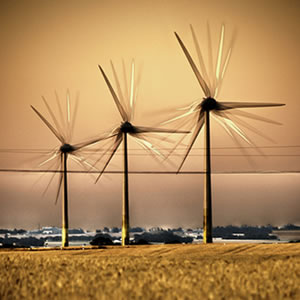- 26 reads

Wind power has been touted as one of the future sources of American energy by every forward thinking politician out there. If you listened to a stump speech by any candidate for any position in the United State government in the past election, you would have been read a laundry list of long-forgotten fuel sources that would not leave Americans dependent on nations and peoples that are not friendly with us at the moment. The list included solar energy, wind, geothermal, nuclear, oil, gas, coal, and hydroelectric.
Some people object to wind power because the large spinning turbines can be a hazard to birds and other flying mammals, like bats. These animals, from time to time, can get caught in or collide with the turbine blades as they spin.
However, birds and bats face daily threats much more pervasive than wind turbines. As a matter of fact, bird and bat casualties are in the hundreds of millions in the past year alone from collisions with buildings, cars, communications towers, homes, power lines, pesticides and a whole host of other potential killers.
Windfields have been taking steps to remove this concern from those trying to protect our winged friends. For instance, the 7.5-megawatt (MW) Jersey-Atlantic Wind Farm is the first coastal wind farm in the United States, though it is not a threat to natural species for a few reasons. The facility houses five turbines, each 397 feet tall, which are used for 30% -60% of the power needs of the Waste Water Treatment plant it sits on.
Learning from past experiences, modern turbines spin much slower than they would have a few years ago, and they also extend higher into the air. In addition, the top parts of the turbine where the blades attach is no longer an area on which birds can perch, preventing them from getting sucked into trouble.
Furthermore, natural habitats need not be disturbed by a new wind turbine, as the sites chosen to house them are increasingly pre-disturbed lands, such as farms, wastewater facilities and the like. There is also no residual danger from the windfields, as there is relatively little noise pollution from the slow moving blades, and the tension wires are minimized to a great extent, favoring an underground system of power lines that can travel both underground and under water.
And if one's only concern with windfields was that a danger existed for these animals, it was noted by John Flicker, the President of the National Audubon Society, that this danger will only increase without some sort of change. "You can't count the carcasses from the pollution from Coal and Gas Burning Facilities…and if we let global warming accelerate, we will lose many more species…", he explained. In pure numbers, that means for every 10,000 birds killed by human activity, only one of those deaths is at the hands of a wind turbine.
If you were thinking about placing a wind turbine in your backyard, you should know that Windmills need a minimum average wind speed of at least 10 to 13 miles per hour to make the wind power pay off. There are seven classes of turbine, and the New Jersey windfield's turbines are somewhere between a class 3 and class 4.
It seems that wind is the future. Now that we've handled the bird problem, there is very little in the way of Wind Power as one of the next great sources of energy in the United States. They really only work in mountainous, coastal, or plains-like areas, but, fortunately for us, we've got plenty of space like that in this country.
GREENandSAVE.com is a free resource for anyone that wants to save energy, money, and the environment. The articles, product reviews, online tools, and return on investment calculations are researched from a diverse range of public and private sector sources. Overall, the company is passionate about saving money as well as creating healthy homes, offices, and lifestyles.
To hear the audio for this and other Great Green Home Show radio segments, visit the "On the Radio" section on GREENandSAVE.com. To learn more about the windfield in Atlantic City, New Jersey, visit New Jersey Wind. And if you are interested harnessing some renewable energy for your own home, take a look at the Energy Savings section on GREENandSAVE.com.

